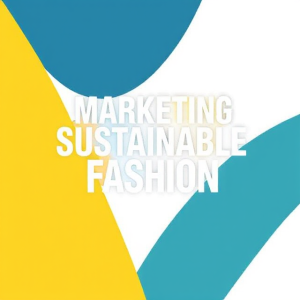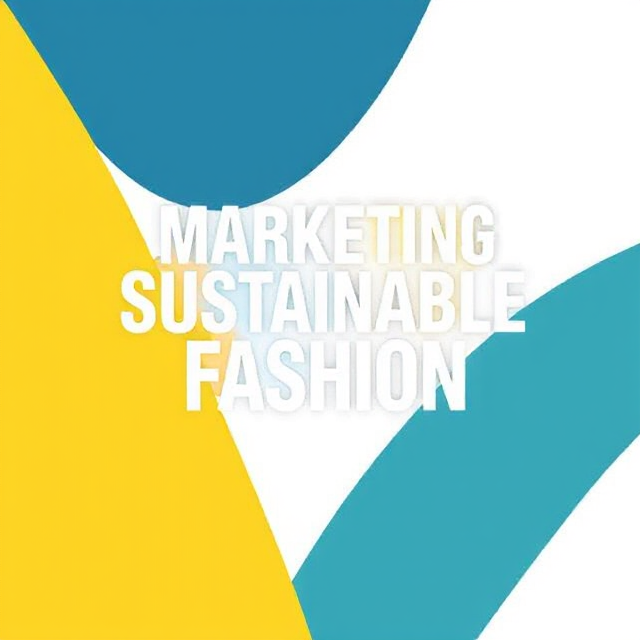
Sustainable fashion is no longer just a trend; it has evolved into a movement that reflects a broader shift in consumer attitudes, business ethics, and environmental consciousness. As the fashion industry faces growing pressure to reduce its carbon footprint, the role of marketing in driving this change has become crucial. Effective marketing strategies in the sustainable fashion sector must not only highlight environmental and social responsibility but also resonate with consumers’ values and demands for authenticity, transparency, and innovation. This article delves into the key aspects of marketing sustainable fashion, from understanding the concept of sustainability in fashion to creating compelling campaigns that promote eco-conscious choices.
1. Understanding Sustainable Fashion
Sustainable fashion refers to clothing, footwear, and accessories that are designed, produced, and consumed with minimal impact on the environment and society. It takes into account the entire lifecycle of a product, from sourcing raw materials to manufacturing processes, distribution, and end-of-life disposal or recycling. Key principles of sustainable fashion include:
- Ethical Production: Ensuring fair wages, safe working conditions, and respect for workers’ rights.
- Eco-friendly Materials: Utilizing natural, organic, or recycled fabrics that reduce harm to the planet.
- Circular Economy: Embracing practices like upcycling, recycling, and repair to prolong the lifecycle of garments.
- Local and Slow Fashion: Focusing on small-scale, locally sourced, and seasonally appropriate fashion to reduce overproduction and waste.
2. The Growing Demand for Sustainability in Fashion
Consumer demand for sustainable fashion has been steadily rising over the past few years. Several factors contribute to this shift in purchasing behavior:
- Environmental Awareness: The fashion industry is one of the largest polluters in the world. As climate change becomes a more urgent issue, consumers are increasingly aware of the environmental impact of fast fashion. This includes water usage, carbon emissions, and waste generated from mass production.
- Transparency: Shoppers today seek transparency from brands about the origins of their products, how they’re made, and their environmental and social impacts. Brands that communicate their sustainability efforts in an honest and clear manner can build trust and loyalty.
- Social Media Influence: Social platforms, especially Instagram, TikTok, and YouTube, have empowered consumers to share their views on sustainability. Influencers and activists use their reach to promote eco-friendly alternatives, encouraging followers to make mindful purchasing decisions.
- Cultural Shift: There has been a broader cultural shift towards conscious consumption, where consumers are prioritizing values like sustainability, ethical labor practices, and corporate social responsibility over mass-produced, disposable fashion.
3. Key Strategies for Marketing Sustainable Fashion
Marketing sustainable fashion requires a balance between promoting eco-friendly practices and appealing to modern consumers’ desire for style, quality, and uniqueness. Here are some key strategies to consider:
A. Storytelling and Authenticity
One of the most powerful ways to market sustainable fashion is through storytelling. Brands can highlight the journey of their products, from the sourcing of materials to the artisans involved in production. Authentic storytelling not only educates consumers about the importance of sustainability but also creates a deeper emotional connection between the brand and the consumer. Stories that focus on the positive impacts of sustainable practices—whether it’s preserving the environment, empowering workers, or supporting local communities—resonate more strongly with today’s ethically-minded shoppers.
B. Transparency and Certifications
In a marketplace where greenwashing (misleading claims of sustainability) is common, transparency is key. Brands must openly share their practices, such as how they source materials, how garments are produced, and their supply chain processes. Third-party certifications and labels, such as Fair Trade, Global Organic Textile Standard (GOTS), and OEKO-TEX, lend credibility to sustainability claims and help consumers make informed choices.
C. Collaborations with Influencers and Activists
Partnering with influencers and environmental activists who align with the brand’s values can significantly boost visibility. These partnerships should focus on promoting the sustainable aspects of the products and educating the audience about why sustainability matters. Influencers can help communicate the message authentically, given their established trust with followers.
D. Utilizing Social Media and Digital Platforms
Social media platforms are invaluable for sustainable fashion marketing. Through Instagram posts, stories, TikTok videos, and YouTube content, brands can share behind-the-scenes looks at their sustainability efforts, eco-fashion tips, and consumer testimonials. Hashtags such as #SustainableFashion, #EcoChic, and #SlowFashion allow for organic conversations and community building.
E. Offering Solutions for Sustainable Living
Brands should not only market individual products but also offer practical solutions that help consumers make more sustainable choices. This could include promoting second-hand or rental fashion, hosting clothing swaps, or offering upcycling services. Additionally, some brands educate consumers on how to care for their garments to extend their lifespan, which can be a part of the broader message of sustainability.
F. Creating Limited Editions and Exclusive Collections
By focusing on limited-edition, exclusive collections, brands can create a sense of urgency while keeping production levels low to prevent overconsumption. These collections can highlight eco-friendly materials or collaborations with artisans and designers that prioritize sustainable craftsmanship.
G. Building a Community Around Sustainability
Building a community of like-minded individuals who share a passion for sustainability can be a great way to foster brand loyalty. This can be achieved through hosting online events, creating educational content, or starting sustainability-focused challenges. Brands that are seen as authentic leaders in the sustainable fashion movement often cultivate a sense of belonging and empowerment among their customer base.
4. Overcoming Marketing Challenges in Sustainable Fashion
While marketing sustainable fashion can be rewarding, it does come with its challenges. Here are some obstacles to be mindful of:
- Misleading Claims and Greenwashing: To stand out, brands must ensure that they genuinely follow sustainable practices and avoid making exaggerated claims that could damage their credibility.
- Price Sensitivity: Sustainable fashion is often more expensive due to ethical production methods and high-quality materials. Brands must find ways to justify this price difference, such as emphasizing longevity, the value of investing in quality, or offering cost-effective alternatives like renting or upcycling.
- Educational Barriers: Many consumers still lack knowledge about sustainable fashion and its benefits. Brands must invest in educational campaigns that demystify the term “sustainability” and show how it can be part of everyday life.
5. The Future of Sustainable Fashion Marketing
The future of sustainable fashion marketing lies in continued innovation and authenticity. As consumers become more educated and concerned about environmental issues, the demand for transparency and eco-conscious practices will increase. Brands that evolve with these changing values and engage their audience through meaningful storytelling, creative collaborations, and community-building efforts will thrive.
In addition, the digital transformation in fashion—such as virtual clothing, digital clothing, and the rise of blockchain to track product journeys—presents new opportunities for marketing sustainable fashion. By embracing these innovations and staying true to their values, fashion brands can help create a more sustainable and conscious future.
Marketing sustainable fashion is not just about selling products; it’s about fostering a shift toward more responsible consumption. By combining transparency, storytelling, digital engagement, and ethical practices, brands can effectively capture the hearts of eco-conscious consumers while contributing to the fight against environmental degradation. As the fashion industry continues to evolve, marketing strategies focused on sustainability will play a pivotal role in shaping a more sustainable and equitable future for both the planet and its people.
